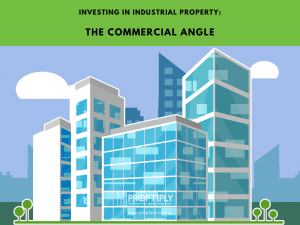
In our previous article, we looked some of the environmental factors you need to consider in industrial property investing. In this article, we’ll take you through what you need to look at from a commercial view point. These include financial aspects you’ll need to consider in choosing your industrial property. Let’s dive in.
1. MCST fees
We’ve talked about the reasons for investing in positive cash flow properties in a previous article. In order to reap the benefits from a positive cash flow property, you need to ensure that what is going out of your pocket does not exceed what goes in. Your expenses – the mortgage payments and interest, MCST fees, utilities, insurance and other payments – should not exceed the rental income that you can bring in from your tenancy.
It’s important to take a good look at MCST fees in this regard. MCST stands for Management Strata Corporation Title and it’s a body that helps to manage the common facilities of the industrial development. MCST fees are the services charges you pay for maintenance of the facilities.
MCST fees are usually calculated per square foot (psf). A reasonable MCST would probably amount to 10 cents psf. On the other hand, a higher MCST fee of, say, 50 cents psf would eat significantly into your positive cash flow. For a 2,000 sqft unit, this would amount to a difference of $800 in MCST fees.
Therefore, when you go unit hunting, you need to take into consideration factors which would result in a high MCST fee. A development with a lot of “frills” such as fully air-conditioned corridors and recreational facilities such as swimming pools or gyms, amongst others, would require a lot more maintenance. This would result in a higher MCST which would eat into your positive cash flow.
2. Rental yield
Another important consideration from a commercial point of view is whether the rental yield is attractive. A rental yield of 6% on a 60-year leasehold is likely to be reasonable. However, for a development with less than 30 years remaining on its lease, it would be better to lock in a higher rental yield, for instance, 10%.
There are several software in the market that can allow you to compare statistics such as transacted prices, per square foot prices and rental per square foot. This is useful to check whether the potential rental yield you can get from your shortlisted property is reasonable. You can also compare whether the asking rental for your unit is at a fair value or at inflated prices. If your unit is priced at an attractive rental price from the perspective of a tenant, you are able to maintain the rental price during bad times, yet still have room to negotiate for higher rental in the future during market upturns.
3. Tenancy agreement
Most of the time, property investors are likely to seek a bank loan to purchase an investment property. You stand a better chance of obtaining a loan if you are purchasing an industrial unit which comes with an existing tenancy agreement because the rental income can go towards servicing the loan.